Are There Greater Angular Resolution Limitations When a Distant Object is Viewed From the Ground Versus When Viewed Much Higher Up?
Angular Resolution describes the ability of any image-forming device such as an optical or radio telescope, a microscope, a camera, or an eye, to distinguish small details of an object, thereby making it a major determinant of image resolution. There are significantly greater angular resolution limitations when viewing a distant ocean object from the ground compared to viewing it from a higher altitude.
Two Primary Causes for Greater Angular Resolution Limitations:
1. One cause for this angular resolution limitation is the distorting effect of The Earth’s atmosphere. When you view a distant object near the ocean horizon from the ground, the light travels through a maximum amount of the lower atmosphere, which contains the most turbulence, which in turn, directly effects the eye’s ability to resolve distant images on the ocean surface.
2. Another cause for this angular resolution limitation is the fact that the observer is looking from ground level out to the horizon line where the ocean meets the sky. Just as when we see railroad tracks appear to compress into a convergence line in the distance, we also experience this same convergence effect with the ocean “line” meeting the skyline, which becomes the apparent horizon. Again, as in the apparent convergence of railroad tracks in the distance, we know that the railroad tracks do not literally converge in the distance, but rather, they go on for many, many more miles beyond our ability to resolve them. The compression line is where angular resolution drops off considerably, and eventually compresses into vanishing point. However, something else happens when the observer is a ground level. And it is most acute when the observational mechanism is literally on the ground. When viewing at ground level, the bottom portion of buildings, receding ships, and/or people walking away, etc…will begin to compress and appear to disappear bottom first due to the particular low height of the observer. At a low observational height, the horizon line is compressed, but the upper portion of an object remains in full view, since it does not exist in the compressed horizon line.
This image explains the concept of angular resolution and how it affects the appearance of distant objects. It argues that the apparent compression of a building near the horizon is due to angular resolution, not the curvature of the Earth.
Also:
Variables to Consider:
Angular Resolution: The ability to distinguish between two objects that are close together.
Vanishing Line: The horizon line where objects appear to disappear.
Apparent Compression: As a building gets farther away, the floors near the horizon appear to get smaller and closer together.
Compression vs. Curvature: The image’s main point is that this visual effect is caused by the limits of angular resolution and not by the physical curvature of the Earth.
When the observer elevates himself, the angular resolution limitations are effected. In this image, the lower section of this particular building is much easier to resolve since the observer is not viewing from the compressed horizon line where the ground meets the sky. The compressed horizon line exists far behind the building.
And that is how Perspective works. Buildings appear to “shrink” as the observer distance increases, and all parts of the building remain in proper proportion to each other depending upon the observer’s height. If tall buildings could be said to “vanish bottom first”, then that is entirely due to the height of the observer.
And so, the apparent compression of distant objects, such as a building near the horizon, is explained by the concept of Angular Resolution:
Angular Resolution is the ability of an eye or optical device to distinguish between two closely spaced objects or details on an object. As the distance to an object increases, the angle between the top and bottom of the object becomes smaller.
When an object is far away, the angle it subtends in the observer’s field of view becomes so small that the details, such as the bottom of a building, can no longer be resolved and appear to merge or compress.
This is not due to the curvature of the Earth, but a result of the limitations of the eye’s visual acuity. While any alleged curvature of The Earth could be used to explain why objects disappear from the bottom up, this is a separate phenomenon from the visual compression that happens as a result of angular resolution.
The human eye has a minimum angular resolution of about 0.02°, meaning details smaller than this angle cannot be distinguished. Optical aids like telescopes or binoculars can improve angular resolution, making it possible to see objects with a smaller angular size.
Change The Observer’s Height and The Lower Portion of a Building is back to Normal Proportions:
Again, when viewing at ground level, the bottom portion of buildings, receding ships, and/or people walking away, etc…will begin to compress and appear to disappear bottom first due to the particular low height of the observer. At a low observational height, the horizon line is compressed, but the upper portion of an object remains in full view, since it does not exist in the compressed horizon line. This effect is otherwise known as Perspective.
The Horizon Line & Vanishing Points EXPLAINED - In Depth Beginner Guide:
Perspective on a Planar Surface, and Convergence and Compression at The Vantage Point
Extraordinary Claims Demand Extraordinary Evidence.
Note How All Sides of This Structure, Left, Right, Top, and Bottom, are Obviously Parallel to Each Other, and Yet, They Appear to Converge at The Compressed Vantage Point in The Distance:
Extraordinary Claims Demand Extraordinary Evidence:
In discussions of The Flat Earth Model, the term “compression at the vantage point” refers to Flat-Earthers using the optical effect of perspective to explain why distant objects appear to sink or become obscured and truncated from the bottom up.
The “truncated ship from the bottom” is a phrase used to describe the optical illusion of a ship’s lower portion disappearing first as it sails away towards the geometric horizon. This phenomenon is a visual proof of the natural optical compression of the horizon that we observe over a flat surface. This is also known as convergence. Flat Earthers admit that this optical effect is a result of “atmospheric compression” or “perspective compression” on a flat plane.
The Flat Earth Interpretation of Perspective:
Real-World Perspective states that objects appear to get smaller and closer to the horizon as they recede, eventually reaching a vanishing point, or horizon compression and convergence line, where they are too small to see. Where the sky and ocean appear to meet, anything that exists in that compression and convergence line at the horizon appears to be truncated, with the bottom of the object disappearing first, as if the object were going over a curve and “setting” over a curved horizon. This is an optical effect but not a real physical effect. The effect is observable with ships in the distance, as well. They appear to disappear bottom first, but in reality, the ship is merely being truncated by an apparent compressed horizon.
Perspective, Angular Resolution Limitations, and Compression Effects: In a Flat Earth Model, the hulls of ships are expected to disappear first due to perspective, angular resolution limitations, and compression effects as the water meets the sky. This is a widely known fact in science and perspective. But they can easily be brought back into view using the Nikon P-1000 camera, thereby, proving The Earth is Flat, which has been done thousands of times. A ships “sinking” over the apparent horizon bottom first is merely a trick of perspective, a “vanishing point” effect where distant objects appear to disappear bottom-up as they get farther away. Using a camera like the Nikon P-1000, you can zoom in on a ship that appears to have disappeared, bringing it back into view. This proves the ship was never hidden by a curve, as Heliocentrists like to assert.
How Real-World Phenomena Supports Flat Earth Claims: Extraordinary Claims Demand Extraordinary Evidence:
The Disappearing Hull First: The observation of ships disappearing hull-first over the geometric horizon is a classic example of this compression and convergence line.
Vantage Point and Visibility: Climbing to a higher vantage point on a Flat Earth allows you to see farther and brings objects that were previously hidden beyond the geometric horizon back into view, from the top down. In order to resolve the truncated and compressed horizon line more readily at the building’s base, you can simply elevate yourself up to a higher altitude, and then, the building’s lower compression line will extend itself out further, thereby resulting in the angular resolution of the lower section of the building falling back to normal dimensions. When you elevate yourself, you move the distant vanishing line/band of convergence line higher, which illustrates how vanishing point perspective optics are effecting your perception of the building’s lower portion and not Earth curvature.
The Horizon Always Remains at Eye Level: On a Flat Earth, the horizon is always demonstrably at eye level, regardless of your altitude. From a high vantage point, the effect of perspective compression on a Flat Earth would be different than it is on a Spherical Earth. Flat Earth proponents claim that photographs from high altitudes correctly show a flat-looking horizon are evidence of a Flat Earth. Where there is not evidence of curvature and sphericity, none exists. Extraordinary claims demand extraordinary evidence.
How Perspective Compression Works on a Spherical Earth:
The Horizon Drops With Altitude: On a spherical Earth, the horizon is always below eye level. As you gain altitude, your line of sight extends further over the curved surface, causing the horizon to drop further down. Yet, we do not observe this in reality.
Perspective Creates The “Flat” Look: When filming from a high vantage point with a wide-angle lens, the immense scale of The Earth and the vast distance to the horizon can make it appear flat. In reality, the camera’s perspective creates an optical effect where objects appear compressed and the curvature becomes less obvious. Nevertheless, the absence of any curvature at any altitude illustrates the mistaken interpretation of perspective and vantage point compression by The Heliocentric viewpoint.
Visual Proof of Curvature: Heliocentrists claims that high-altitude footage and photographs prove The Earth’s curvature. They claims that videos from balloons and aircraft show the horizon dropping as the camera rises, as if they were one vast ball. They also claim that the use of special filters, as in the famous Flat Earth “evidence” photo of The Ryazan Region, reveals the actual curvature that was otherwise hidden by the effects of perspective and refraction. However, perspective and refraction have no correlation to Earth curvature. They are merely optical effects that bend and compress light somewhat. They do not parabolically curve light around a sphere.
Flat Earth Perspective:
Perspective Causes Objects to Disappear: Flat-Earthers propose that perspective causes objects to become truncated and vanish from the bottom up as they recede into the distance, as if they are sinking into the horizon. This corresponds to the real-world “Rules of Perspective”, where objects become truncated as they recede into the compression line of the geometric horizon when viewed from the planar surface of a Flat Earth.
A Horizon That Rises With You: In the Flat Earth model, the horizon is supposedly the vanishing point, meaning it should rise to the observer’s eye level regardless of altitude. This is demonstrably false; pilots and anyone with a precise instrument like a theodolite can measure the horizon dipping as they go higher.
Angular Resolution Convergence, and Compression: The Limitations of The Human Eye
In a Flat Earth Model, the hulls of ships are expected to disappear first due to perspective, angular resolution limitations, and compression effects as the water meets the sky. This is a widely known fact in science and perspective. But they can easily be brought back into view using the Nikon P-1000 camera, thereby, proving The Earth is Flat, which has been done thousands of times. A ships “sinking” over the apparent horizon bottom first is merely a trick of perspective, a “vanishing point” effect where distant objects appear to disappear bottom-up as they get farther away. Using a camera like the Nikon P-1000, you can zoom in on a ship that appears to have disappeared, bringing it back into view. This proves the ship was never hidden by a curve, as Heliocentrists like to assert.
Flat Earth - Cargo Ship Out At Sea Proves Flat Earth Nikon P900 Digital Camera Video Footage:
Nikon P900 Zooming In On Buoy (Flat Earth Proof) No Drop:
Flat Earth - Ships Disappearing Over the Horizon:
Ships Disappear Beyond Earth’s Curvature?:
One of The Best Video Examinations of Angular Resolution and the Limitations of The Human Eye Ever Made
One factor, of several, that must be considered when viewing the Sun’s recession away from the observer is The Rayleigh Criterion. Among the many others factors include refraction, atmospheric distortion, and the apparent compression of objects on the horizon as they recede into the distance from the observer. The latter factor is revealed in the Laws of Perspective.
The human eye can only resolve objects as they move into the distance to a prescribed limit. Resolution limit describes how objects can appear to disappear and/or “blur out” into the distance, which is calculated using The Rayleigh Criterion. This is of particular importance when considering the apparent “setting” of The Sun over an imaginary curve, for The Rayleigh Criterion points out that before considering this apparent “setting” of the Sun, which is a Heliocentric claim, one must consider the role of the limitations of angular resolution, as they pertain to the naked human eye, as objects appear to disappear and/or “blur out” into the distance.
Angular Resolution and Horizons on Our Motionless Plane:



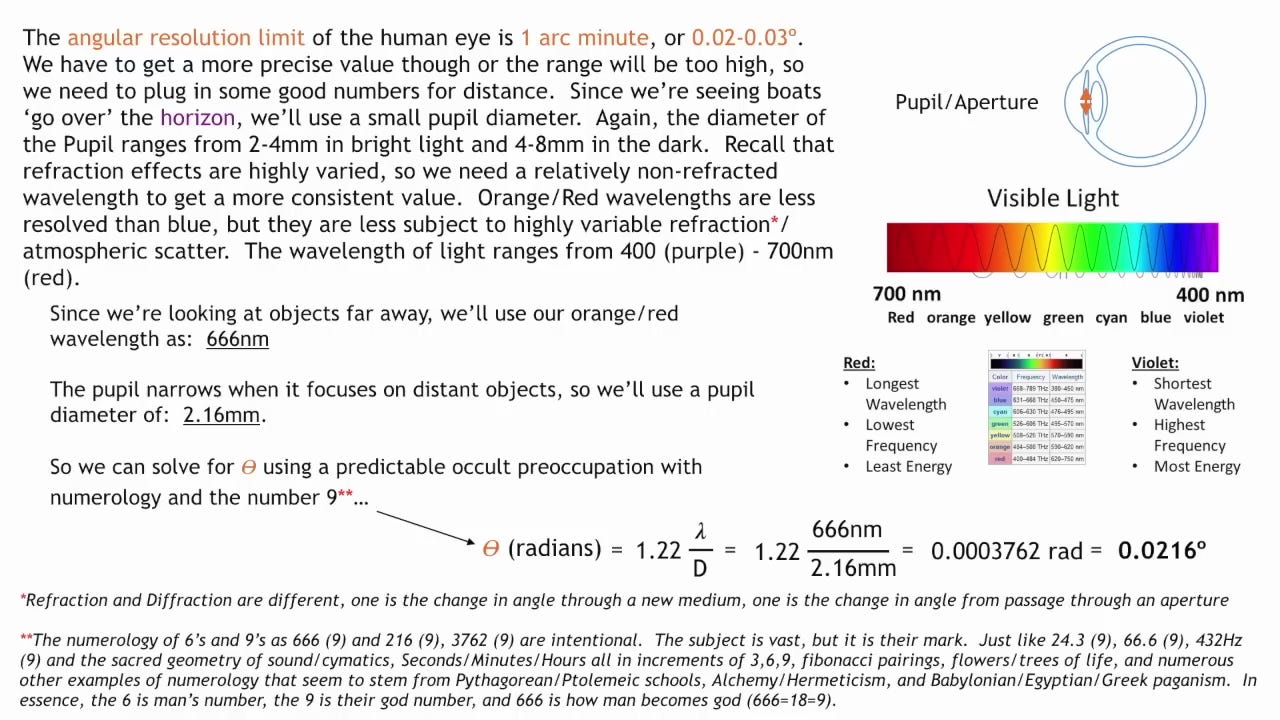
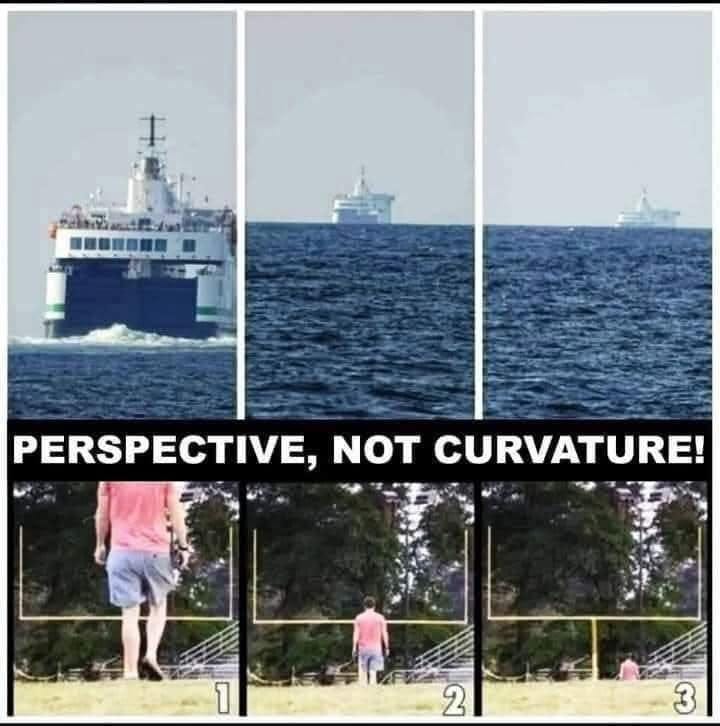
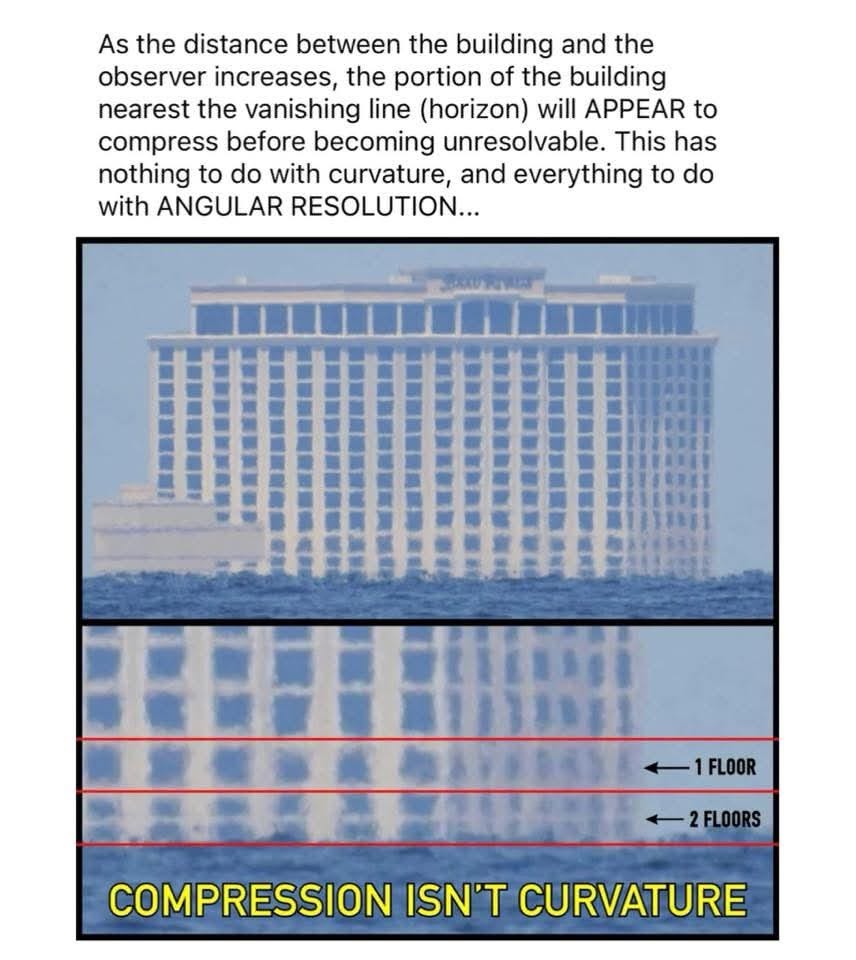
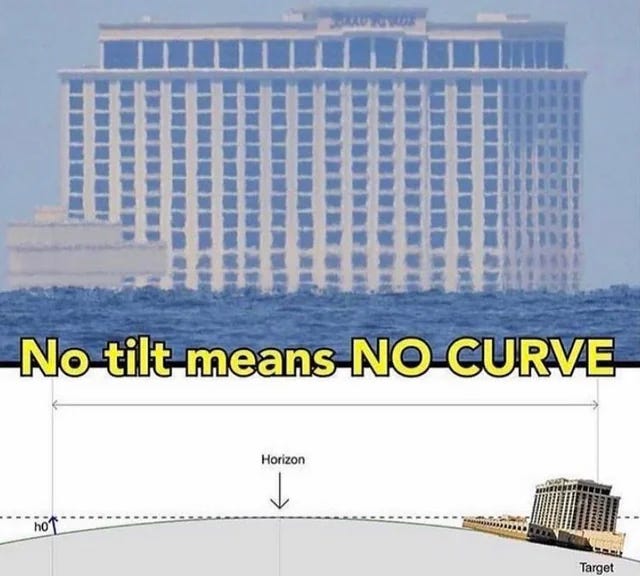
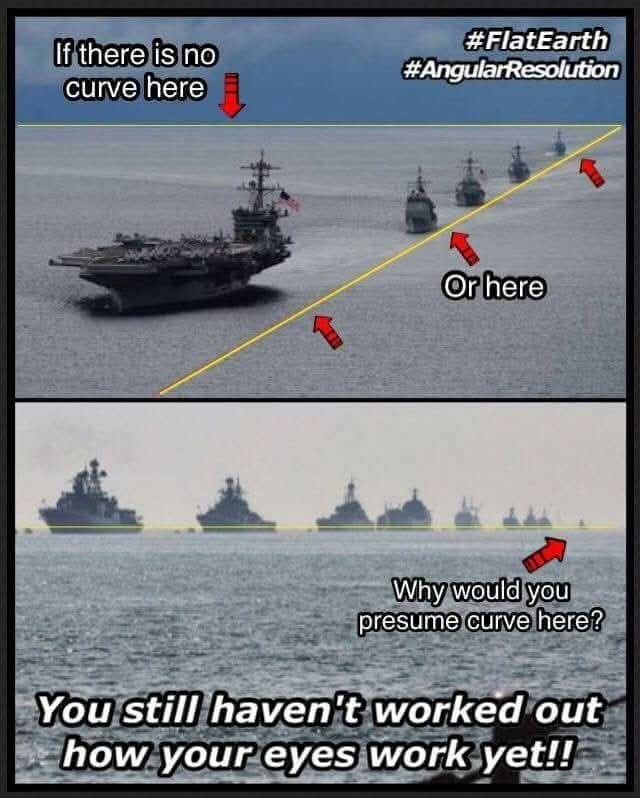
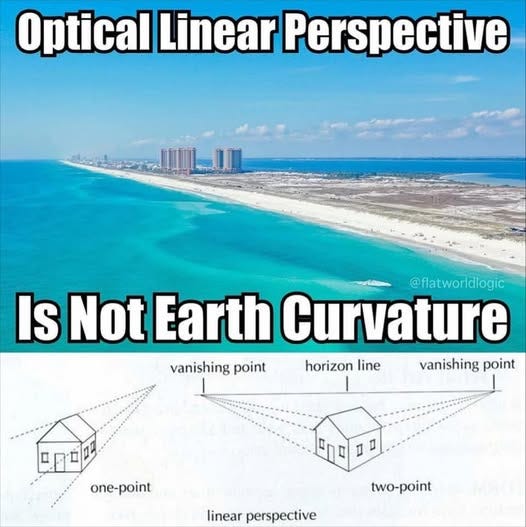

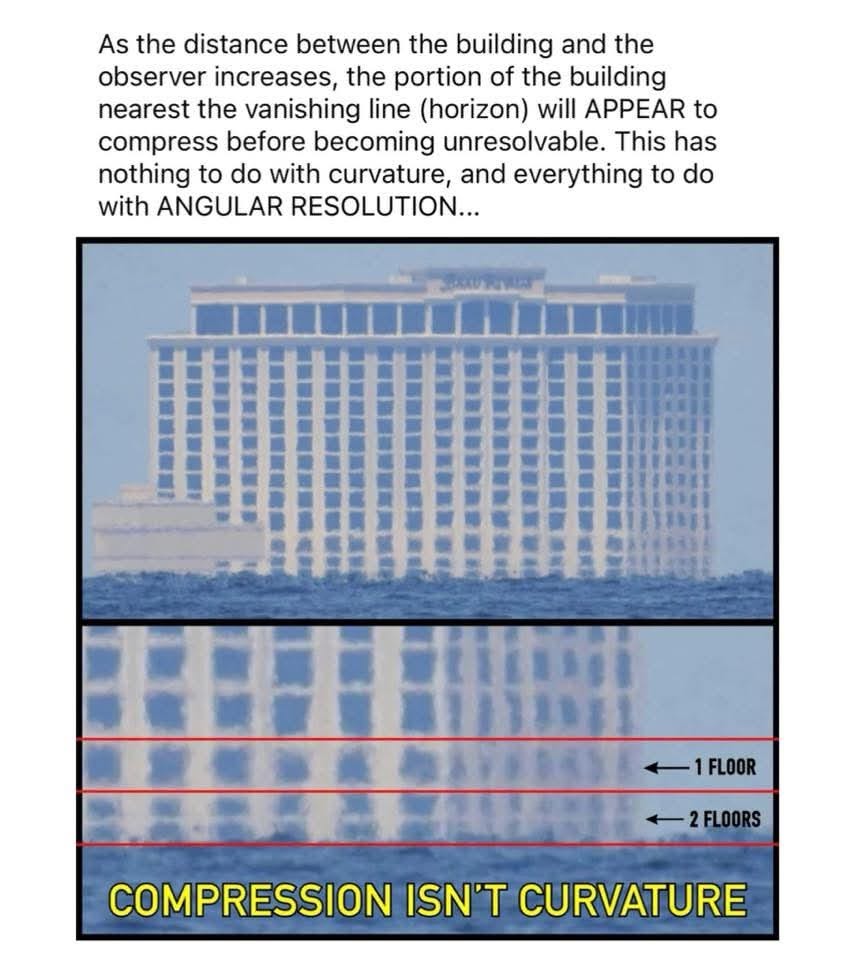
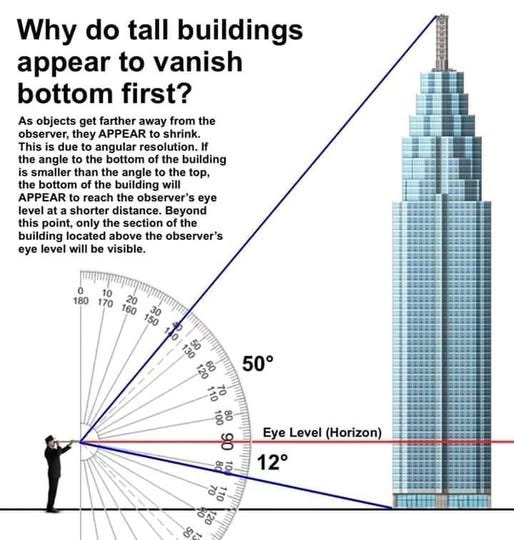
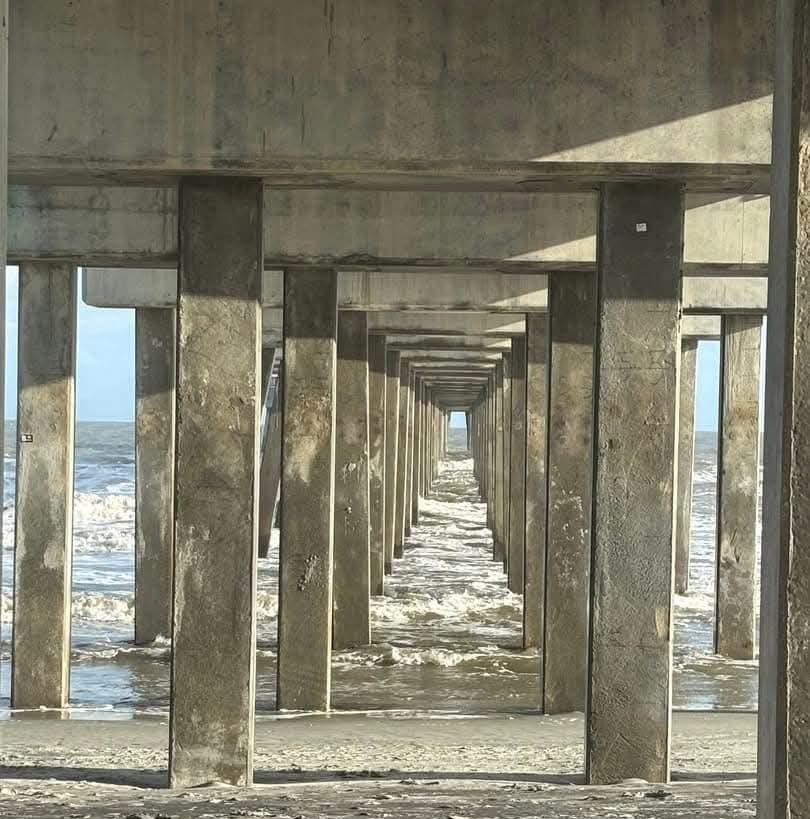
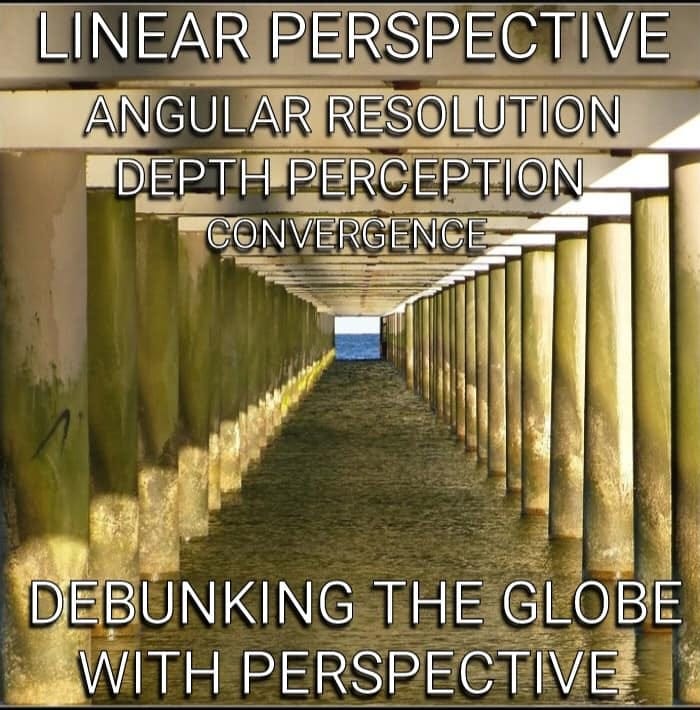
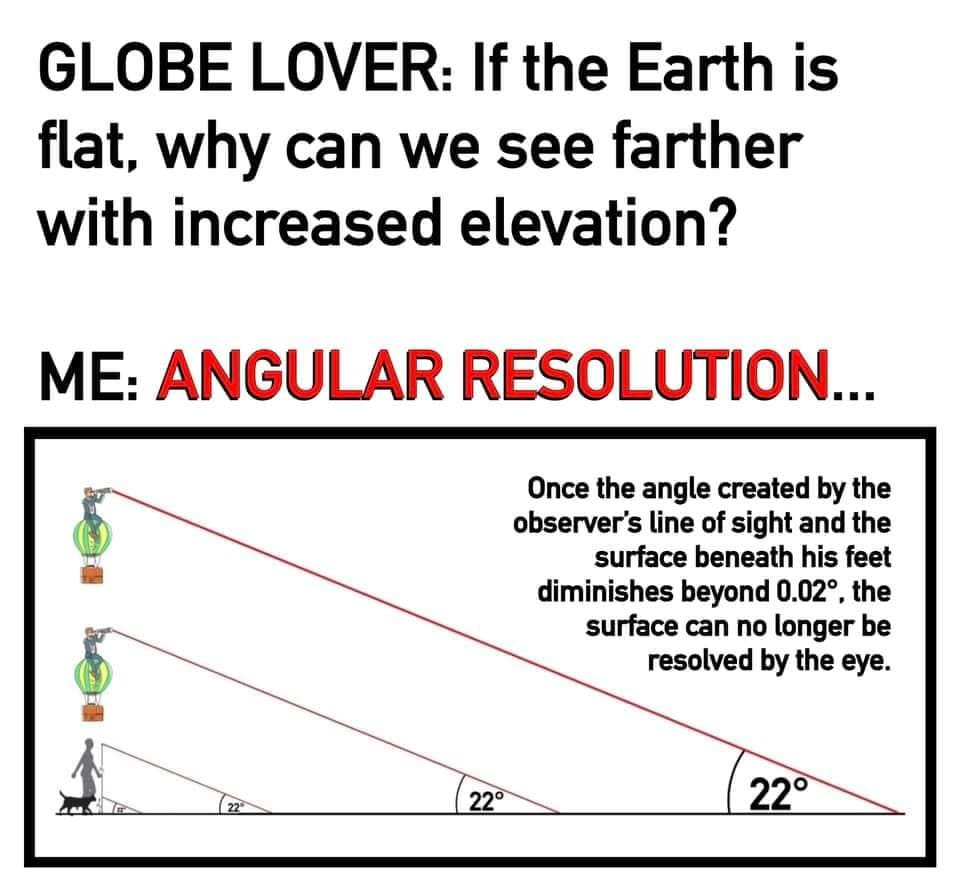
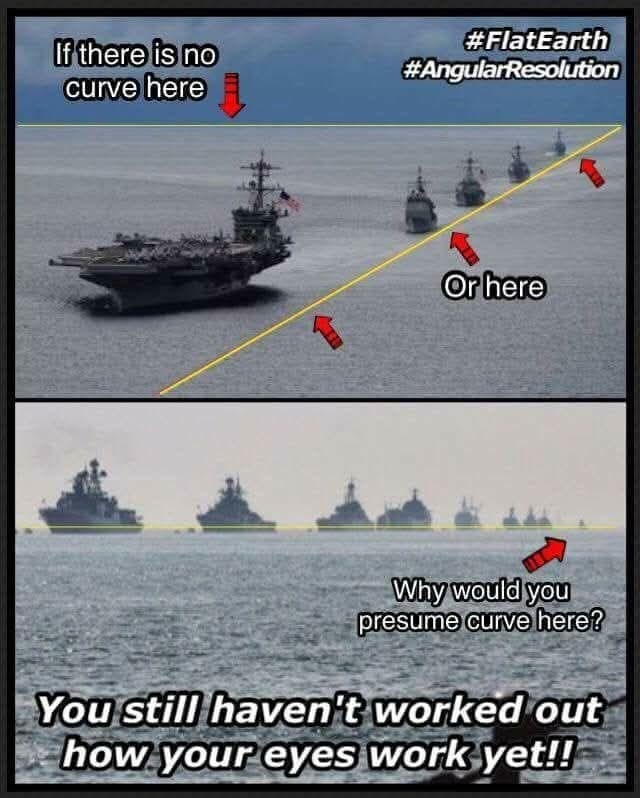


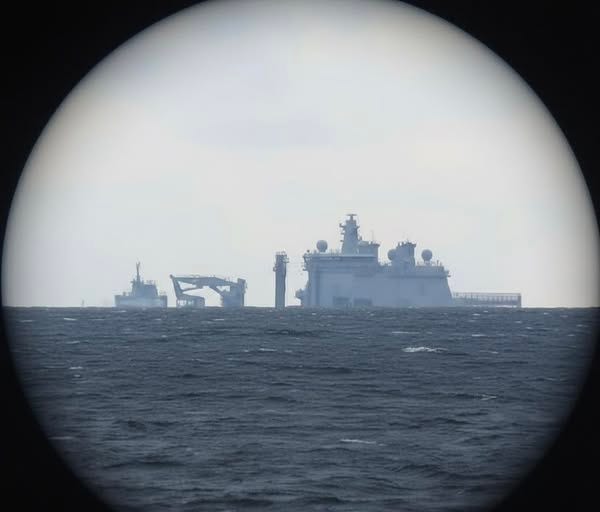
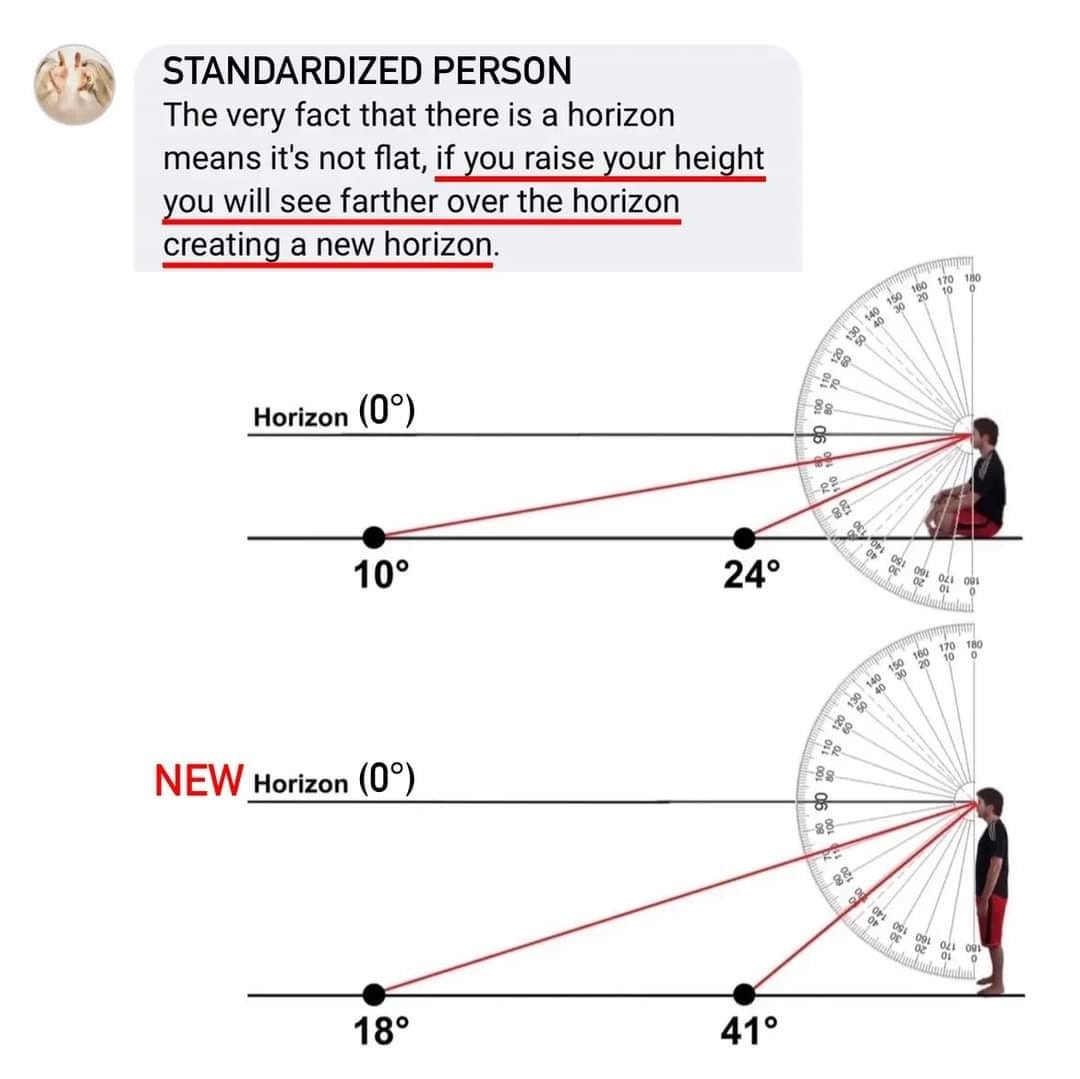
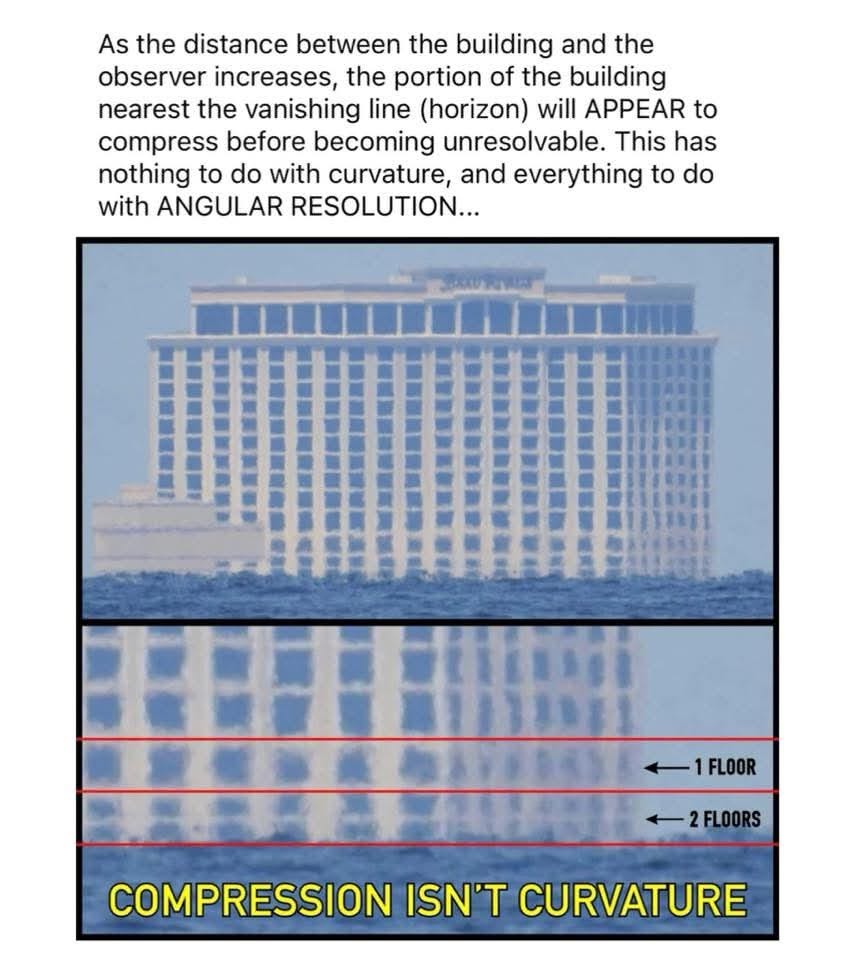
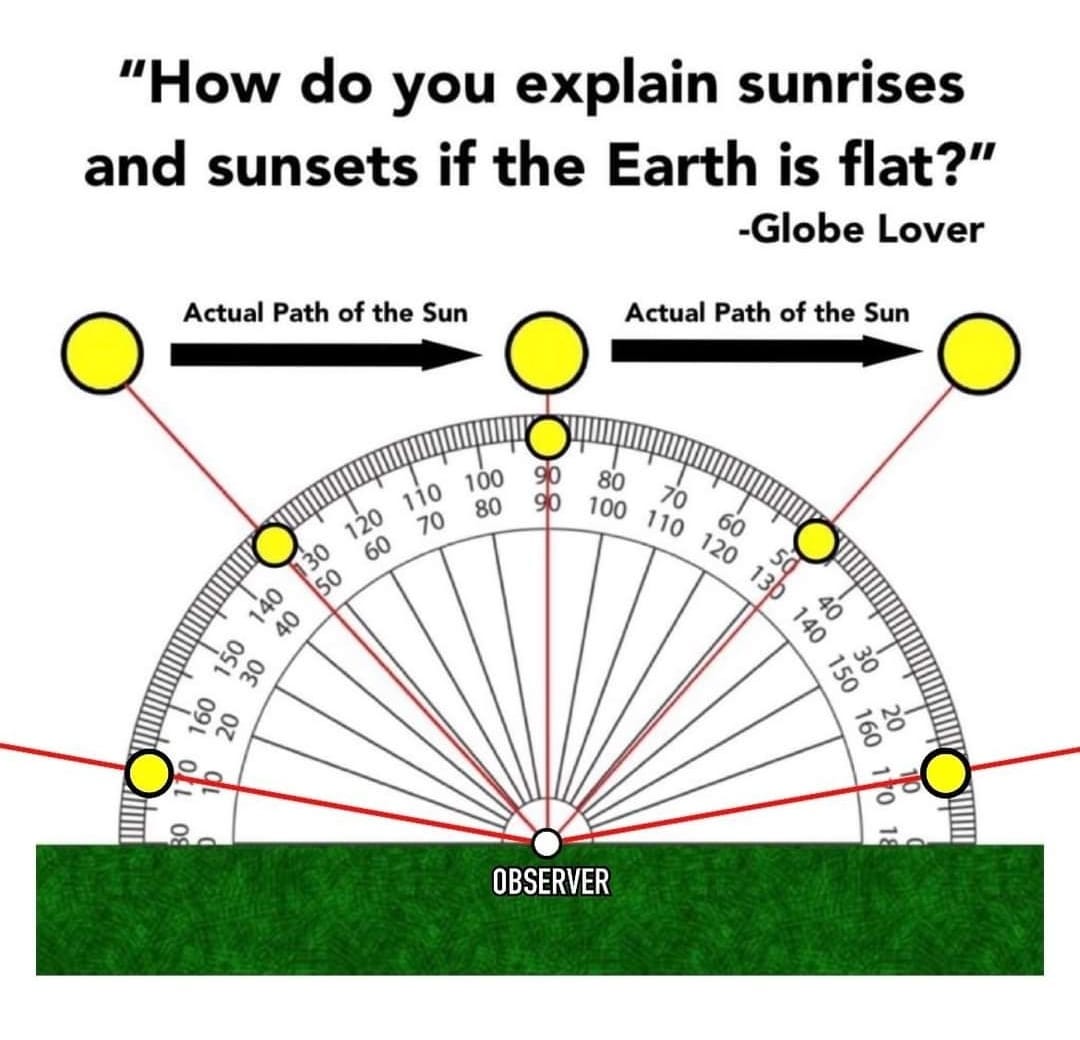
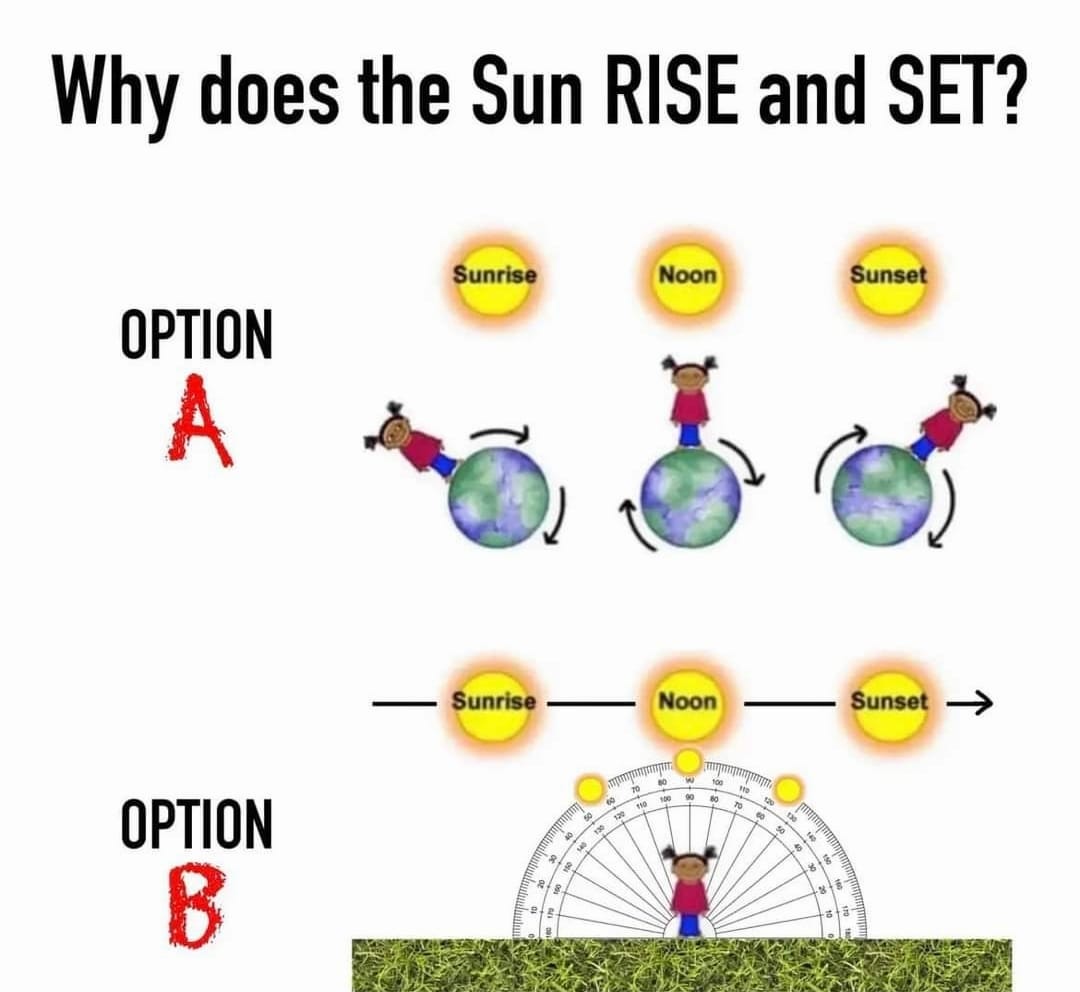
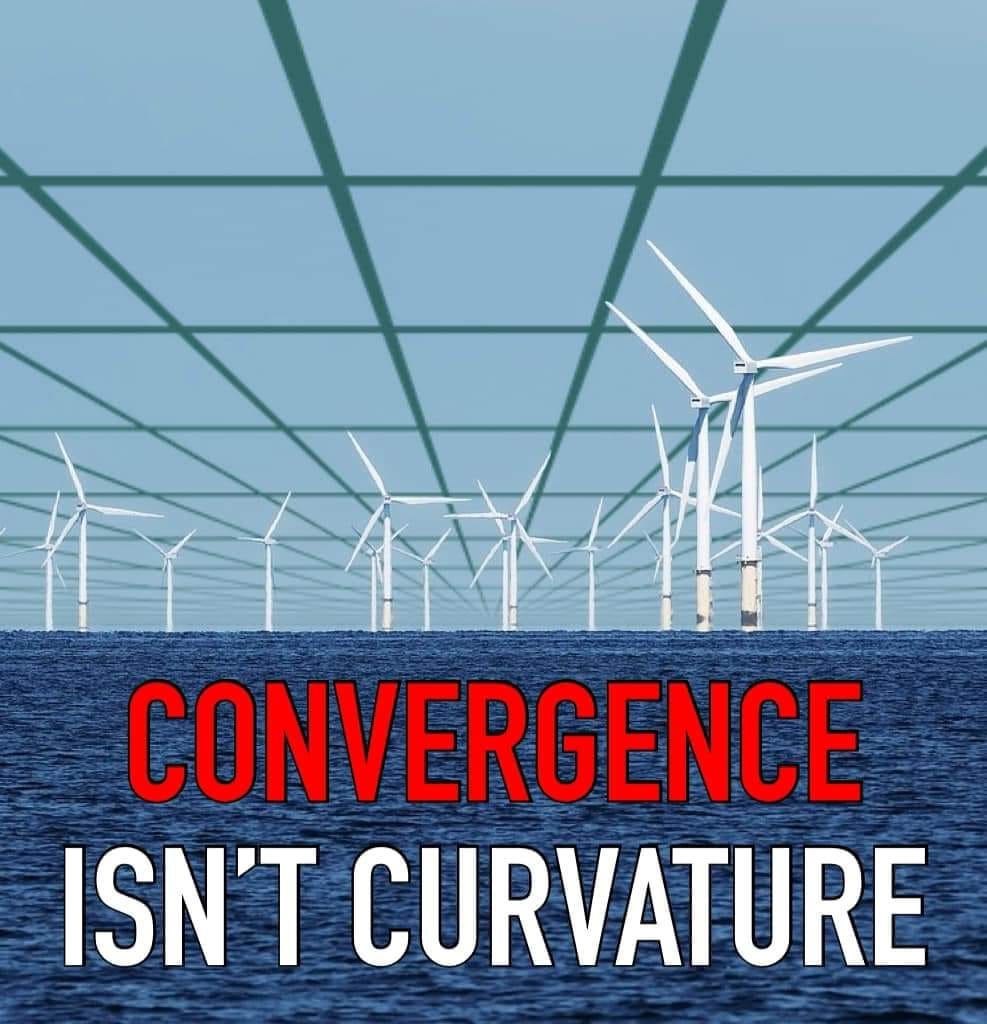
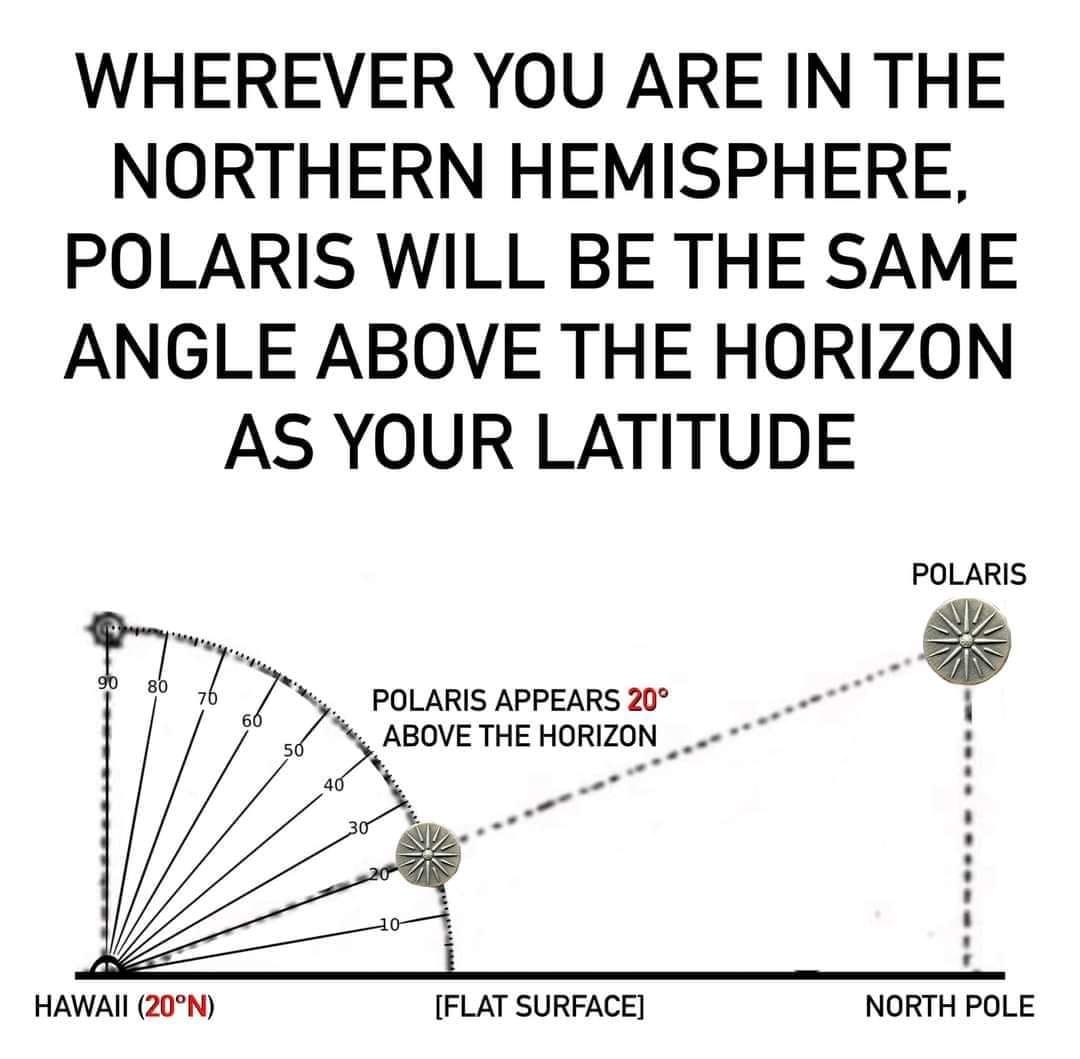

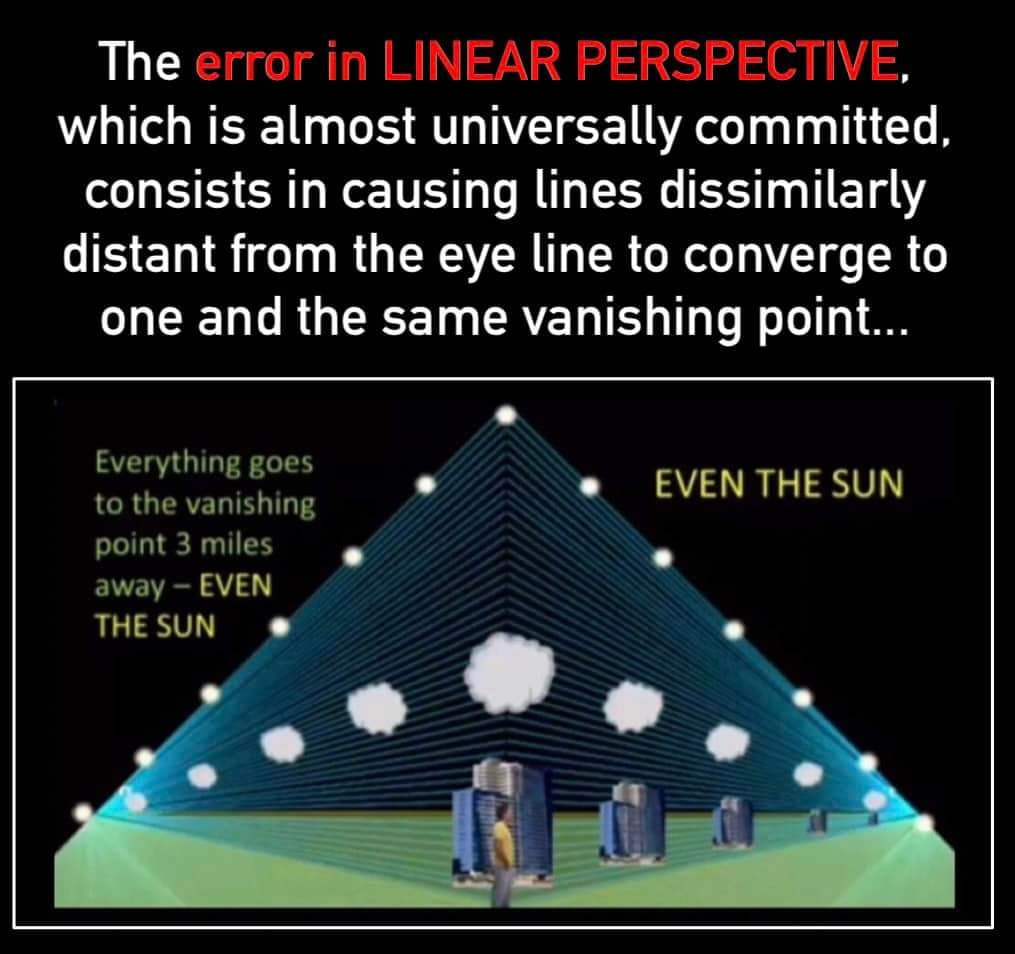
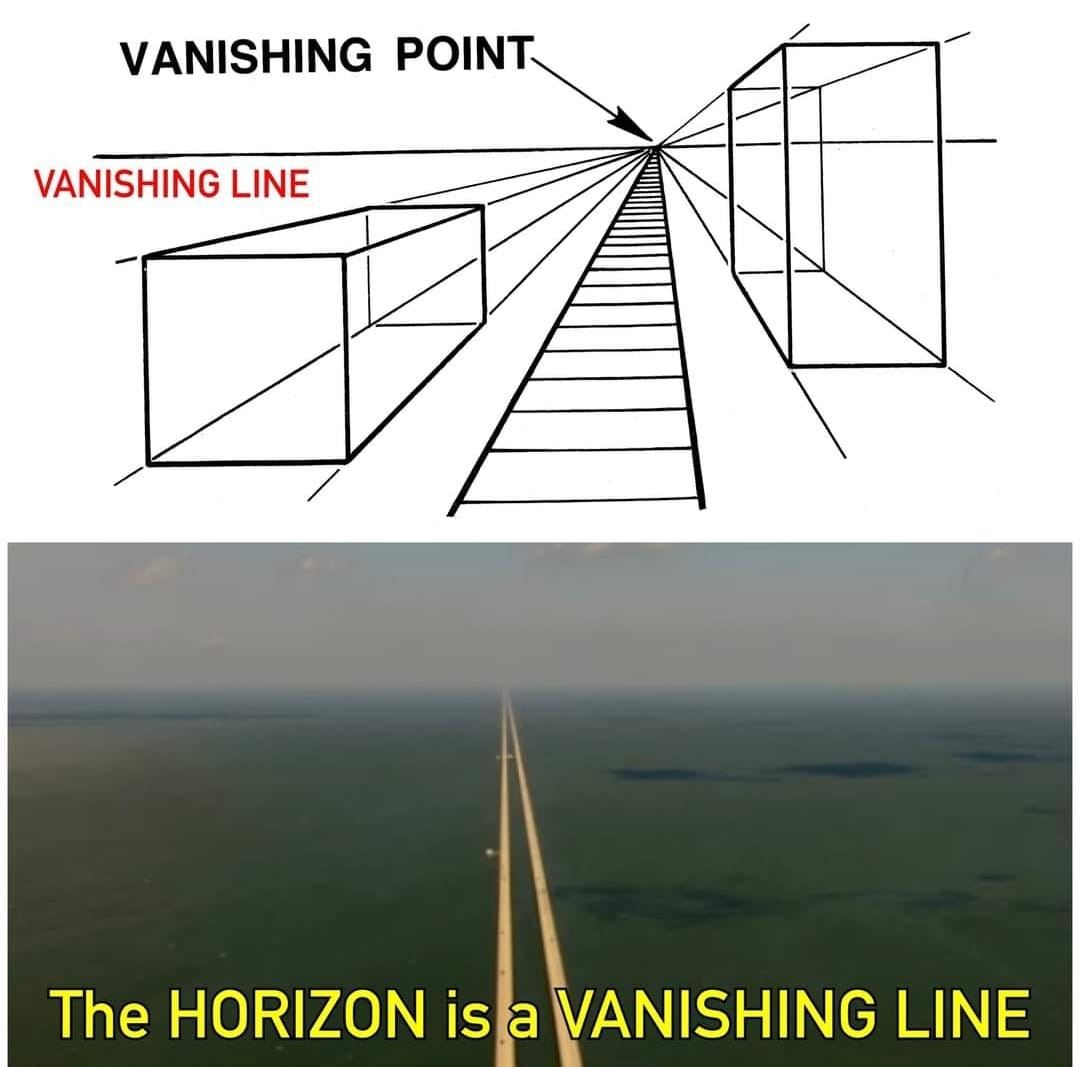
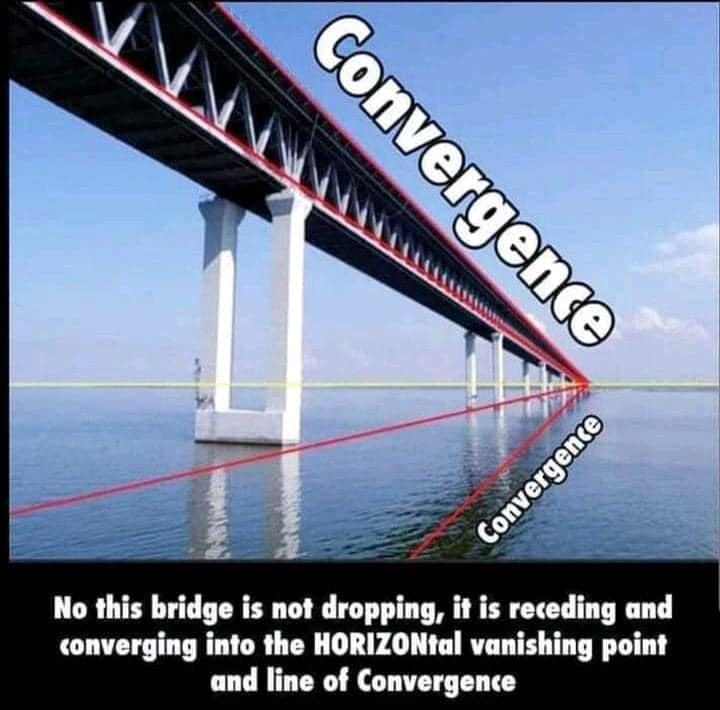



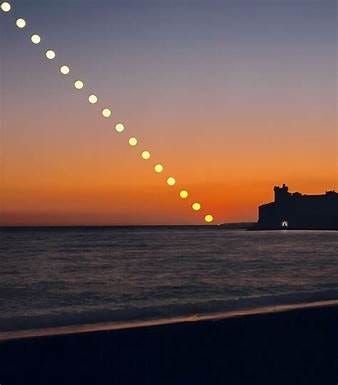

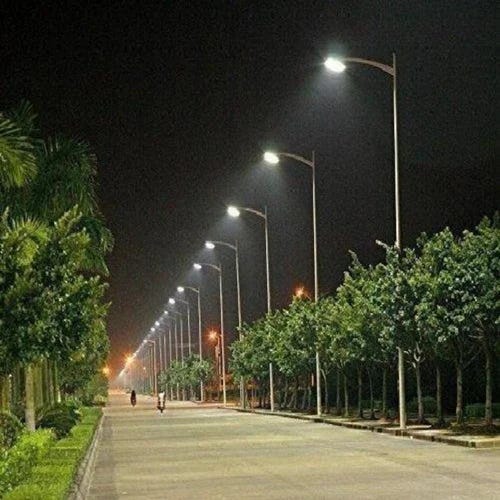




Perhaps another way at looking at it.....😂🧐
There must be photos of a very wide sea horizon between two land masses/ structures ?
One that would have to be curved due to distance....
Cheers,
Mick.